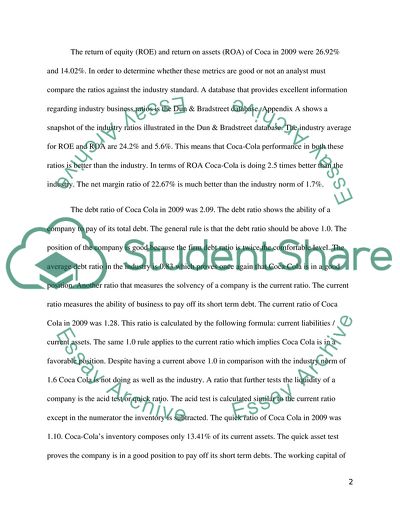Coca-Cola Co - Financial Analysis Term Paper Example | Topics and Well Written Essays - 1000 words. https://studentshare.org/finance-accounting/1737877-coca-cola-co-financial-analysis
Coca-Cola Co - Financial Analysis Term Paper Example | Topics and Well Written Essays - 1000 Words. https://studentshare.org/finance-accounting/1737877-coca-cola-co-financial-analysis.


